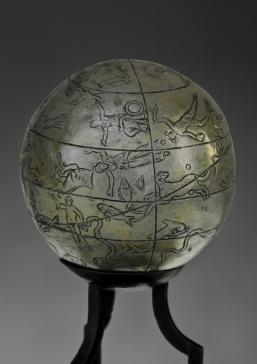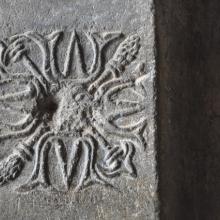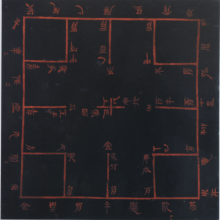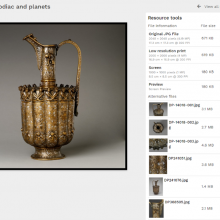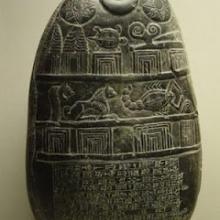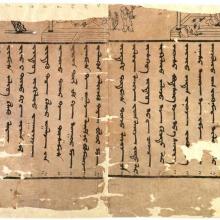Astral practices left their imprint on material culture in many ways: instruments were used and knowledge was inscribed on diverse mediums such as buildings, manuscripts, everyday objects, and objects of art. These artifacts, now scattered globally, constitute the focal point of this working group. To facilitate research and enable cross-cultural comparisons, an annotated image database has been developed by an international team of researchers during the first and second phase of the project, that now holds over 8000 entries. While issues of mobility and provenance were in focus in these phases, from 2024 to 2027 research will explore the spatial and intellectual relation between objects, especially how people from different social strata surrounded themselves with celestial imagery of the heavens in different phases of their lives in historical cultures in Europe, Asia, and North Africa.
An overarching theme involves investigating the relationship between the development of cosmologies and objects of cosmic representations, such as the Chinese shi-model, the Western astrolabe, or various star maps. Rather than taking these artifacts as mere reflection of established cosmological systems, we place them in networks of ideas, actions, expressions, and institutions and study how the acts of designing, seeing, and using these objects shaped cosmological thinking in different cultures.
Starting with an examination of metal objects, particularly economic items like coins, the project investigates not only materiality in connection to astral imagery but also production centers and exchanges. Coins with astral depictions play a central role in enhancing our comprehension of religion, political and diplomatic life, economic institutions, literacy, art, knowledge transfer, and objectscapes in the ancient and medieval world. Additionally, celestial globes are explored in terms of their creation and iconography in relation to textual sources and canonical images found on objects of art. Astral depictions also manifest themselves in ritual contexts, particularly within funerary art and tombs. Archaeological excavations enrich our insight into cultural interactions, facilitating comparative studies on funerary art across various cultures. The project offers interpretations on newly discovered material, adding new approaches to well-established ones. Examples include the analysis of the astral mural at the tomb in Pella, the so-called Egyptian Star Clocks, the zodiacal motifs in East Asian tombs, and the celestial deities in Central Asia.
Spanning multiple disciplines including history, history of science, archaeology, and art history, the project also challenges conventional interpretations and methodologies of studying astral imagery in material culture.
Selected material and textual artifacts will be analyzed and contextualized addressing the following questions:
- What were the different traditions for depicting the heavens? And in which ways did they differ?
- What were the meanings and functions of celestial representations in each cultural context?
- Are there similarities, differences, or ruptures across these traditions within the same region and period as well as across cultures?
- How were astral practices embedded within educational, religious, and artistic contexts, and how were these negotiations framed and carried out?
- How did local and global practices interact in forming astral imagery, and what role did economic, political, and diplomatic relations play in those interactions?
- How did the materiality of artifacts influence the development of astral knowledge and historical narratives?
- In what ways can the archaeological context in which artifacts displaying astral imagery are found help us trace usages, routes, and mobility in ancient and medieval landscapes?
In collaboration with the Research IT Group, an interactive research tool, the Heavens map, has been developed and will become available in the fall of 2024 to assist researchers in filtering, navigating, visualizing, and exploring data stored in the VoH database in an intuitive manner. Big data requires powerful analysis tools—one of the main goals in this phase is to use state-of-the-art image processing methods that allow us to conduct large-scale comparative analyses, addressing and expanding our research questions.
Current and future research projects related to the themes and goals of the working group aim to broaden the international team of scholars with diverse expertise through different formats of collaboration and cooperation.
Current Activities
Starting in March 2024, we are offering a series of meetings titled “Objects Revealed.” The goal is to explore objects featuring astral imagery, and engage in discussions about their features, materiality, culturally specific and intercultural contexts, and potential meanings.
We are delighted to have Francesca Rochberg, John Tresch, and Melissa Nelson with us in April 2024. They participated in the "Approaching, Translating, and Engaging Cosmology" Roundtable at the MPIWG Institute’s Colloquium on April 16, 2024.
In partnership with the Research IT Group, we are hosting the lecture series, "Overcoming Obstacles, Learning from Experiences: A Transdisciplinary Conversation about Computer Vision, 3D Models, Preservation, and Outreach in Digital Humanities Projects" which draws on and discusses insights and experiences from other international Digital Humanities projects.
In the fall of 2024, we will launch a new platform to publish and promote digital projects and a blog to expand the project's public outreach.

